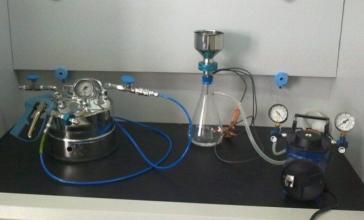corrosion test![]()
Valve detection![]()
Metallographic analysis![]()
component analysis![]()
Mechanical test![]()
failure analysis![]()
Nondestructive flaw detection![]()

2016-11-11 Rongda test 1056 times

Detection Purpose: Testing material anti-crevice corrosion ability
Detection range: Various metals, stainless steel, alloys, non-ferrous metals
Crevice corrosion: Electrolyte solution exists. In the narrow gap between metal and metal, metal and non-metal, the migration of medium is blocked, resulting in a local corrosion form. Crevice corrosion will reduce the effective geometric size of components and reduce the degree of coincidence. The volume of corrosion products in cracks increases, forming local stress and making assembly difficult. Crevice corrosion characteristics: 1. It can occur on all metals and alloys, especially on the surface of metal materials which are passivated and corrosion resistant. 2. The medium can be any acidic or neutral corrosive solution, and the solution containing Cl-is most likely to cause crevice corrosion. 3. Compared with pitting corrosion, crevice corrosion is more likely to occur in the same material. When Ep < E < Eb, the original corrosion pits can develop, but no new corrosion pits can be produced, and crevice corrosion can occur and develop in this potential range. The critical potential of crevice corrosion is lower than that of pitting corrosion.
Last article: NO!
Next article: NO!